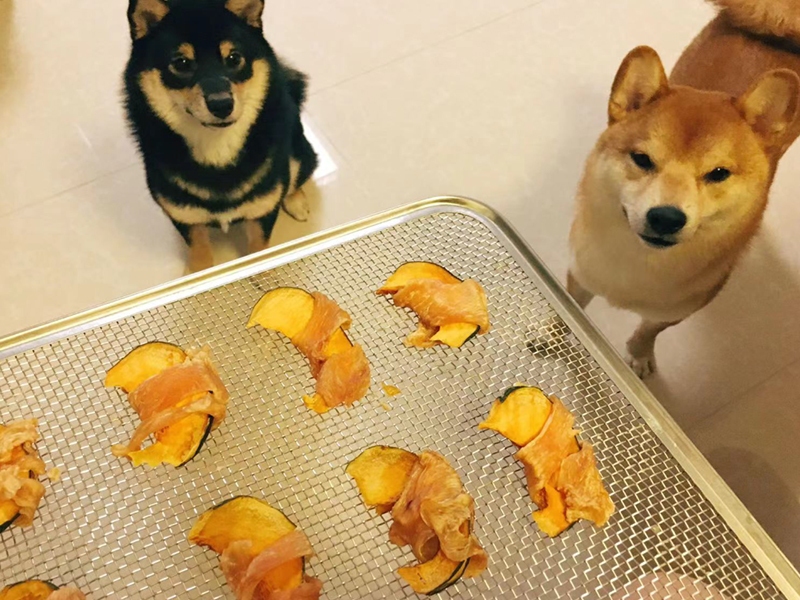If you’ve ever stood in a pet aisle staring at those shiny bags of treats and wondered whether you’re feeding your pet junk food with good branding, you’re not alone. And if you’ve also toyed with the idea of making your own treats at home because you saw someone on TikTok whip up “healthy pumpkin oat bites” for their dog, welcome to the club.
But here’s the real question:
Are homemade treats actually better? Or are commercial treats unfairly demonized because “store bought” automatically feels suspicious?
Let’s unpack the realities on both sides so you can make decisions based on facts, not vibes.
What Actually Counts as a “Treat” for Pets?
Before we jump into homemade versus commercial, let’s set the baseline.
A treat is anything that’s not part of your pet’s complete and balanced daily diet.
That sounds simple, but here’s where pet owners slip up:
-
They assume treats are harmless because they’re small.
-
They treat “healthy” as the same thing as “safe.”
-
They forget pets can’t process food like humans.
-
They use treats as emotional currency. (We’ve all been guilty.)
Treats should ideally make up no more than 10 percent of your pet’s daily calories. That’s the guideline vets recommend, yet almost no one follows it.
So whether you bake treats yourself or buy them at a store, moderation and ingredients matter way more than the source.
Now let’s explore both sides.
The Case for Homemade Treats: Control, Freshness, and Peace of Mind
Homemade treats have a certain charm. You know what’s going inside. You pick the ingredients. You tweak recipes based on your pet’s allergies or preferences. Plus, many homemade treat recipes are surprisingly simple.
But before you get starry-eyed, let’s break down the real pros and the hidden risks.
Why Many Owners Prefer Homemade Treats
1. You Control Every Ingredient
No mystery meats. No preservatives you can’t pronounce. No weird “animal digest” or artificial colors.
If your dog is allergic to chicken, you simply don’t add chicken.
If your cat needs low-fat options, you adjust the recipe.
But let me challenge you a bit:
Are you really checking every ingredient for pet safety, or just assuming “natural = safe”?
Because that’s where homemade treats backfire.
2. They’re Fresher and Less Processed
Homemade treats usually contain real, whole ingredients and no artificial stuff. That’s a solid win.
But consider this:
“Less processed” doesn’t automatically mean “balanced for pets.” A pumpkin cookie is still a cookie. A banana-oat treat is still carb-heavy.
3. They’re Budget-Friendly
Many commercial treats are glorified crackers with fancy marketing. You can make similar or better-quality treats at home with basic ingredients like carrots, oats, or eggs.
But the question is:
Do you actually save money once you factor in ingredients, time, storage, and waste?
For many people, it works out. For others, not so much.
4. Great for Bonding
Pets love the smell of homemade treats in the kitchen. It becomes an experience, not just a snack.
The Hidden Risks of Homemade Treats
This is where people get too comfortable and stop being skeptical — which is where the danger lies.
1. Many Ingredients We Think Are Healthy Are Actually Dangerous
Here are popular “healthy” ingredients owners accidentally use that are toxic to pets:
-
Onions and garlic
-
Nutmeg
-
Chocolate
-
Grapes and raisins
-
Xylitol (in peanut butter)
-
Macadamia nuts
-
Some essential oils
-
Too much salt
And here’s the kicker:
A dog or cat doesn’t have to eat a whole bowl of the wrong ingredient. A trace amount can cause organ damage.
2. Homemade Treats Lack Nutritional Screening
Commercial treats are required to:
-
List ingredients
-
Disclose calories
-
Follow basic safety regulations
Your kitchen isn’t.
You might accidentally make a treat that’s:
-
Too fatty
-
Too high in carbs
-
Too salty
-
Calorie-dense
-
Unsafe over time
It’s not about being “natural.” It’s about being balanced for a species with different digestive capabilities from ours.
3. Poor Storage Leads to Contamination
Homemade treats can:
-
Spoil quickly
-
Mold
-
Grow bacteria
-
Go rancid
Most need refrigeration. Some need freezing. And many people leave homemade treats out too long because “it looks fine.”
Pets aren’t great at telling you “hey, this tastes off.”
4. Quantity Control Is Harder
Most owners don’t calculate:
-
Treat calorie count
-
Treat density
-
Serving sizes
This leads to overweight pets — one of the biggest modern health risks for dogs and cats.
The Case for Commercial Treats: Convenience, Regulation, and Safety Standards
A lot of owners view commercial treats with suspicion. Some of that is deserved. Some of it is just internet fear-mongering.
Let’s break down the real situation.
Why Commercial Treats Aren’t Automatically Bad
1. They Follow Regulatory Standards
Depending on your region, commercial treats must adhere to:
-
Ingredient safety rules
-
Contaminant limits
-
Nutritional disclosure
-
Manufacturing hygiene standards
Does every brand follow these perfectly? No.
But the baseline safety is still higher than a random homemade recipe on TikTok.
2. They’re Formulated for Pets’ Digestive Needs
Commercial treats usually consider:
-
Fat percentage
-
Carbohydrate tolerance
-
Protein sources
-
Dental impact
-
Species-specific risks
Homemade recipes? Not always.
3. They’re Convenient and Long-Lasting
If you have a busy schedule, you don’t always have time for:
-
Baking
-
Dehydrating meat
-
Testing recipes
-
Rotating batches
Commercial treats are easy to grab and use consistently.
4. Specialized Options Exist
For pets with:
-
Sensitive stomachs
-
Allergies
-
Weight issues
-
Dental problems
-
Kidney issues
There are commercial treats specifically designed for them.
Homemade versions often can’t replicate this precision.
But Commercial Treats Have Their Problems Too
Let’s not sugarcoat it.
1. Some Brands Are Full of Junk
Cheap commercial treats often contain:
-
Artificial preservatives
-
Colorings
-
Fillers
-
Low-quality meat meals
-
High sugar levels
-
Cheap fats
Not all brands are guilty, but the market is flooded with low-quality options.
2. Marketing Tricks Owners Easily Fall For
Words like:
-
Human-grade
-
Gourmet
-
Natural
-
Organic
-
Farm-fresh
-
Premium quality
…sound reassuring but often mean nothing nutritionally.
3. Overfeeding Is Easier
Because commercial treats are tasty and easy to give, owners often lose track.
4. Past Recalls Make People Nervous
There have been cases of contamination, yes.
But to be fair, contamination can happen in home kitchens too — it just doesn’t make the news.
So… Which Option Is Better? Homemade or Commercial?
Here’s the honest answer most blogs won’t give:
Neither is automatically safer. Neither is automatically healthier. It depends entirely on the specific choices you make.
If you pick the wrong commercial treat, your pet might gain weight, get stomach issues, or develop diabetes over time.
If you use the wrong homemade ingredient or store treats improperly, your pet could end up at the emergency vet.
The smart path is to approach both options with a critical mind.
Let’s compare them directly.
Read Also: The Rise of Pet Influencers: Can Your Pet Become One?
Side-by-Side Comparison
| Factor | Homemade Treats | Commercial Treats |
|---|---|---|
| Ingredient control | Excellent | Limited |
| Safety consistency | Moderate | Higher (regulated) |
| Risk of toxic ingredients | Moderate to high | Low (if reputable) |
| Convenience | Low | High |
| Cost | Often lower | Varies |
| Nutritional balance | Often low | Can be high |
| Shelf life | Short | Long |
| Customization | High | Low |
What’s Actually Safe for Homemade Treats?
Here’s a quick, realistic list of safe ingredients you can use:
Safe for Dogs
-
Pumpkin puree (plain)
-
Peanut butter (xylitol free)
-
Oats
-
Carrots
-
Apples (no seeds)
-
Chicken (cooked, no seasoning)
-
Sweet potatoes
-
Plain yogurt
Safe for Cats
-
Tuna (small amounts)
-
Cooked chicken
-
Salmon (cooked)
-
Egg
-
Catnip
-
Tiny amounts of cheese
-
Sardines in water
Avoid these for ALL pets
-
Chocolate
-
Garlic, onion, leeks
-
Grapes, raisins
-
Xylitol
-
Alcohol
-
Excess salt
-
Cooked bones
And remember:
Just because something is “safe” doesn’t mean it should be a daily treat.
Red Flags in Commercial Treats
If you’re buying store treats, avoid these:
-
Unnamed meat sources (e.g., “meat meal”)
-
Artificial colors
-
Propylene glycol
-
Corn syrup
-
“Sugar” listed early
-
Too many fillers
-
Strong artificial smell
Look for:
-
Named meat sources
-
Short ingredient lists
-
No artificial additives
-
Vet-recommended brands
-
Calorie information
How to Choose What’s Best for Your Pet
Instead of asking:
“Which is better: homemade or commercial?”
Ask:
“What does my specific pet need?”
Key questions:
-
Does your pet have allergies?
-
Is your pet overweight?
-
Do they have kidney or liver issues?
-
Do they digest certain proteins poorly?
-
Are you someone who can commit to safe homemade prep?
-
Do you overfeed when treats are too easy to give?
The right answer changes based on the pet and the owner’s lifestyle.
So What’s the Ideal Approach? A Balanced Mix
The smartest pet owners usually do a hybrid:
-
Mostly commercial treats that are high quality and vet-approved
-
Occasional homemade treats made with safe, simple ingredients
-
Treats given in moderation, not as emotional comfort
-
Regular check-ins on weight and health
This approach gives you:
-
Safety
-
Convenience
-
Control
-
Variety
It’s the best of both worlds.
Final Thoughts: Be a Skeptical, Informed Pet Parent
At the end of the day, it’s not about choosing a side. It’s about being thoughtful, informed, and intentional.
Ask yourself:
-
Am I giving my pet treats for their benefit or to soothe my feelings?
-
Do I understand what my pet can and can’t digest?
-
Am I reading labels critically?
-
Am I assuming “natural” means “healthy”?
-
Do I need to adjust portion sizes?
Your pet doesn’t need fancy treats. They need safe ones.
If you get that right, you’re already ahead of most pet owners.
If you want, I can also create:
-
A recipe list for safe homemade treats
-
A comparison chart of the best commercial treat brands by category
-
A downloadable guide for pet treat safety
Which direction do you want to take next?



